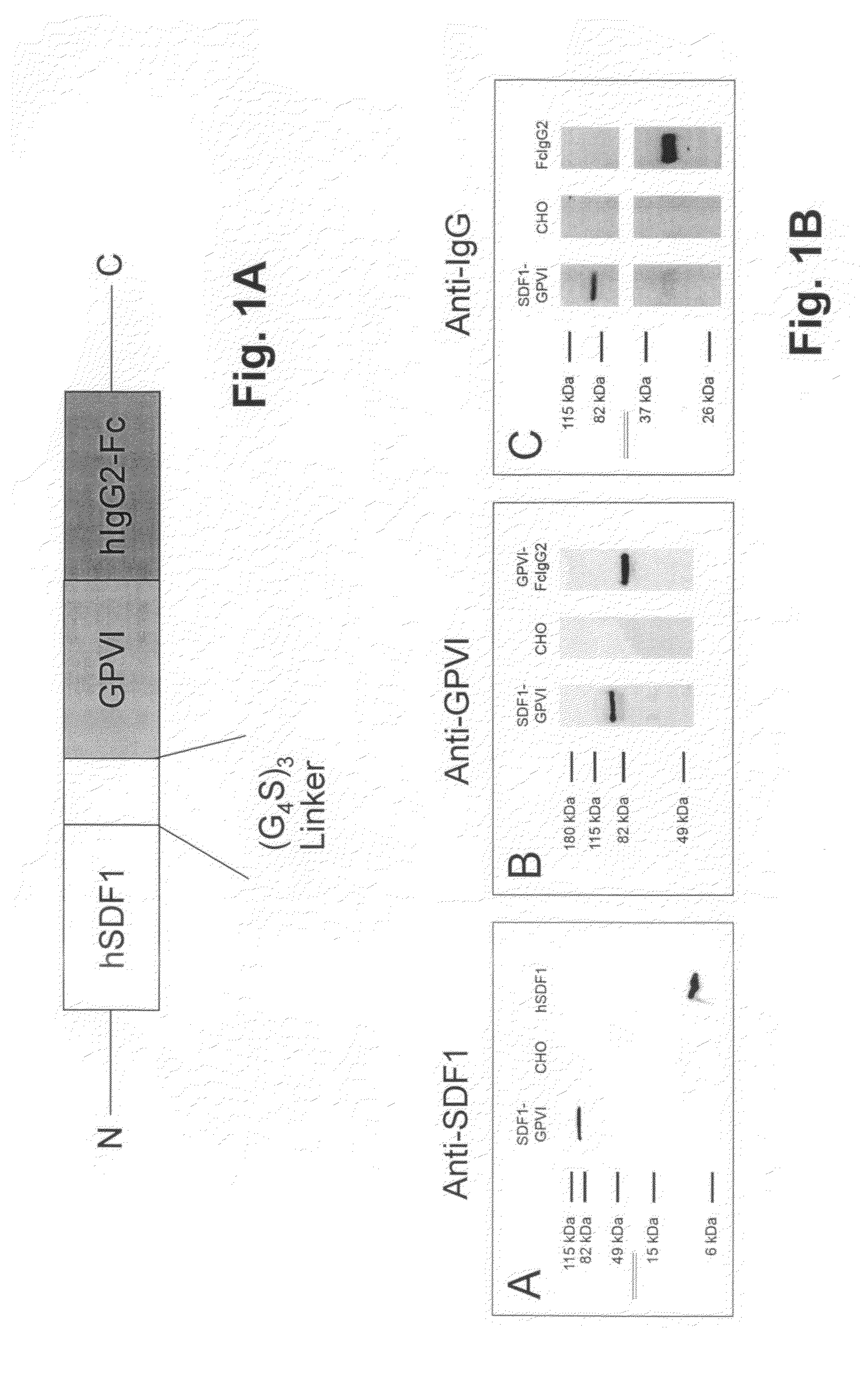Fusion protein and its uses
a technology of fusion protein and fusion protein, which is applied in the field of fusion protein, can solve the problems of cell death by necrosis and apoptosis, loss of integrity in the vascular wall and subsequent bleeding into surrounding tissue, and inability to guarantee the supply of tissue with blood, etc., and achieves the effects of improving hematopoiesis and/or angiogenesis, prolonging the half life of sdf-1, and increasing the binding rate of precursor cells
- Summary
- Abstract
- Description
- Claims
- Application Information
AI Technical Summary
Benefits of technology
Problems solved by technology
Method used
Image
Examples
Embodiment Construction
[0064]FIG. 1 shows in 1A a diagram of one embodiment of the fusion protein according to the invention, wherein, in succession from the N-terminus to the C-terminus, human SDF-1 is followed by a linker molecule via which SDF-1 is linked to GPVI. In said embodiment, the linker molecule consists of the amino acid chain (Glycine4Serine)3. Coupled to the GPVI portion is the human IgG2-Fc portion, which brings about dimerization.
[0065]FIG. 1B shows immunoblots, by means of which the expression of the individual components of the fusion protein, as shown diagrammatically in FIG. 1A, was detected. On the left, an anti-SDF-1 antibody (monoclonal anti-human / mouse CXCL12 / SDFIalpha antibody; R&D Systems; Minneapolis, USA) was used to detect the SDF-1 portion of the fusion protein; in the middle, an anti-GPVI antibody was used to detect the anti-GPVI portion; and on the right, an anti-IgG antibody was used to detect the IgG2-Fc portion of the fusion protein (first lane in each case). It can be s...
PUM
| Property | Measurement | Unit |
|---|---|---|
| wavelength | aaaaa | aaaaa |
| concentrations | aaaaa | aaaaa |
| permeability | aaaaa | aaaaa |
Abstract
Description
Claims
Application Information
 Login to View More
Login to View More - R&D
- Intellectual Property
- Life Sciences
- Materials
- Tech Scout
- Unparalleled Data Quality
- Higher Quality Content
- 60% Fewer Hallucinations
Browse by: Latest US Patents, China's latest patents, Technical Efficacy Thesaurus, Application Domain, Technology Topic, Popular Technical Reports.
© 2025 PatSnap. All rights reserved.Legal|Privacy policy|Modern Slavery Act Transparency Statement|Sitemap|About US| Contact US: help@patsnap.com



